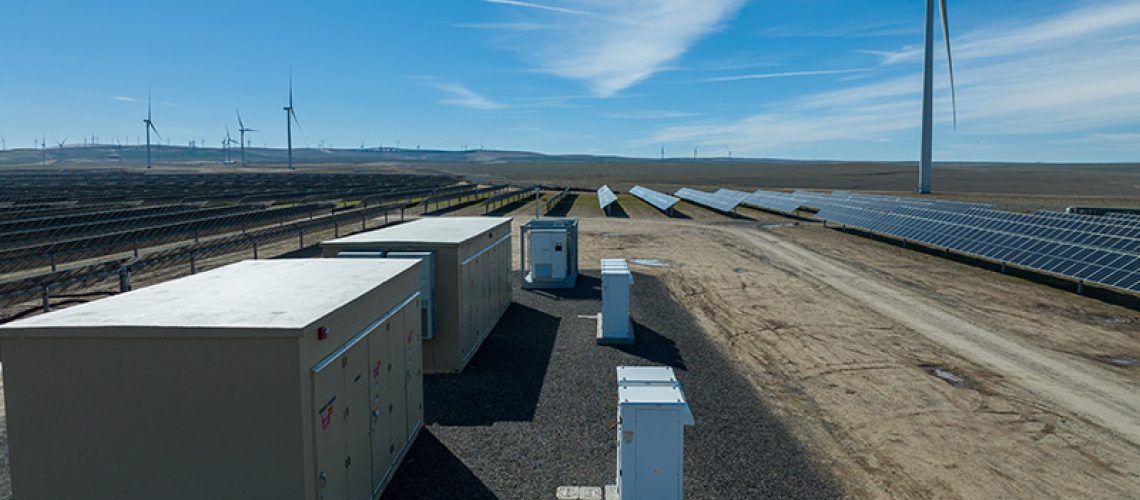The Wheatridge Renewable Energy Facility is one of the first in the country to co-locate a wind farm, a solar facility, and a battery storage system.
June 9, 2022
Portland General Electric (PGE) and NextEra announced the completion of the Wheatridge Renewable Energy Facility a first-of-its-kind renewable energy project that consists of a 300 MW wind farm, which began operation in December 2020, a 50 MW solar facility, and a 30 MW battery storage system.
Wheatridge represents one of the first projects ever built in the United States to combine wind generation, a solar array, and an onsite battery energy storage system (BESS). NextEra said that more battery storage could be installed as the site as the technology matures and the system’s current battery ages. In NextEra’s second-quarter 2019 earnings call, the company revealed that battery duration is four hours, meaning the BESS clocks in at 120 MWh.
In the Supplemental Materials I and II of the project’s development documents, it is noted that the solar systems will be composed of single-axis trackers within the “micrositing corridors” of the project. In the image below, the solar inverters are the tiny red dots and the battery packs that make up the BESS are the blue dots within the orange solar border fences. Notice how they’re distributed among the solar in consistent patterns. These “micrositing” patterns were specifically chosen by NextEra’s engineers to maximize the production at the facilities.
PGE owns 100 MW of the wind project, while a subsidiary of NextEra owns the balance of the project and is selling the electricity generated to PGE under 30-year power purchase agreements.
Approximately 300 jobs were created at Wheatridge during construction, and 10 full-time employees will operate the combined facilities. A new transmission line was constructed to carry power from the project to PGE customers in Portland and the north Willamette Valley.
With the successful construction of Wheatridge, NextEra expects more facilities that locate three or more renewable resources at the same site to be considered for development and brought to life in the coming years.
A 2018 study by scientists at the University of California, Irvine; the California Institute of Technology; and the Carnegie Institution for Science, modeled a solar-heavy/wind power electricity grid, without nationwide HVDC, that could reliably deliver 80% of US electricity needs.
To achieve that feat, the United States would have to install massive amounts of storage with 12 total hours of duration. To raise the figure to a 100% wind+solar US electricity grid, the storage component would have to jump from 12 hours to 3 weeks in duration.



